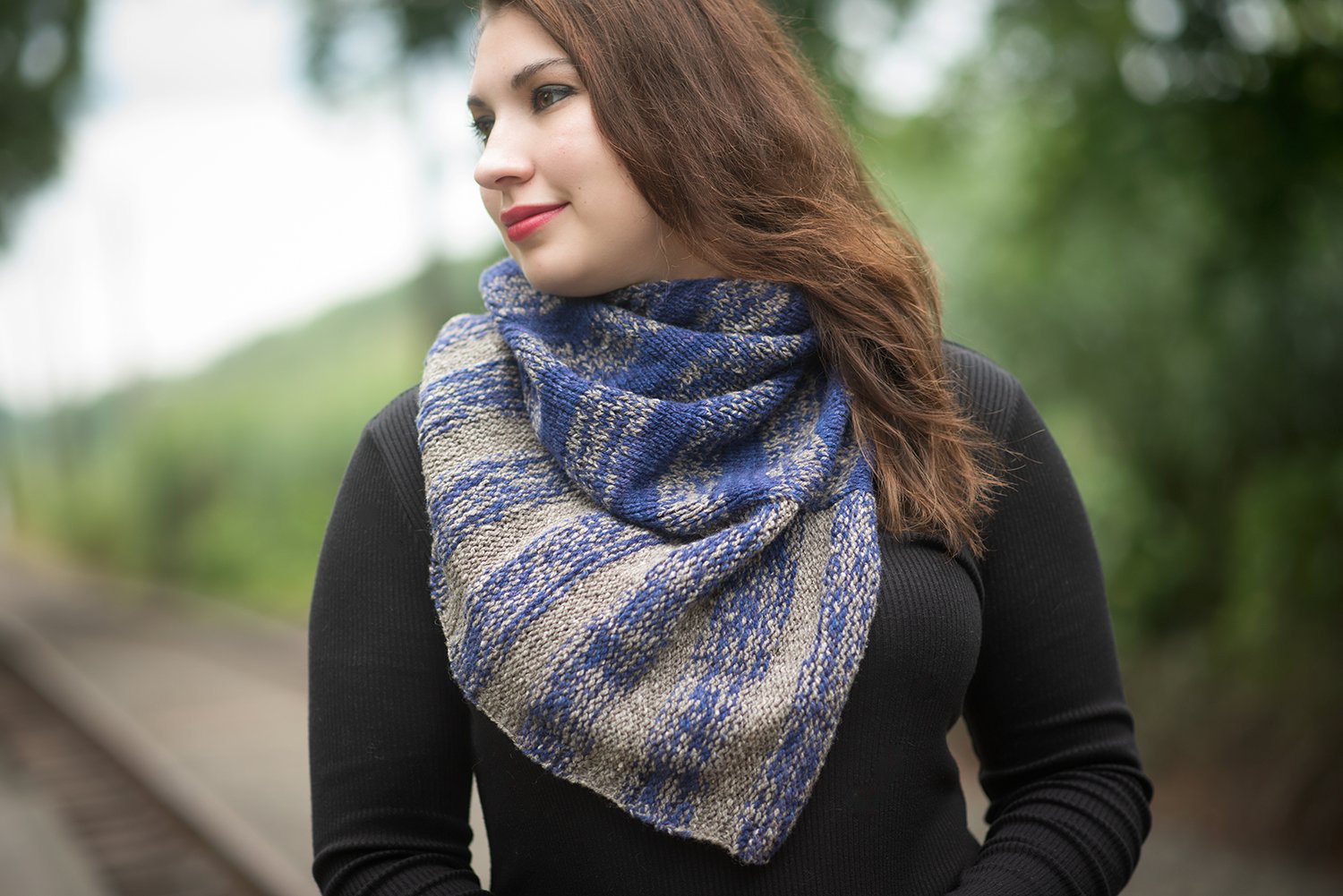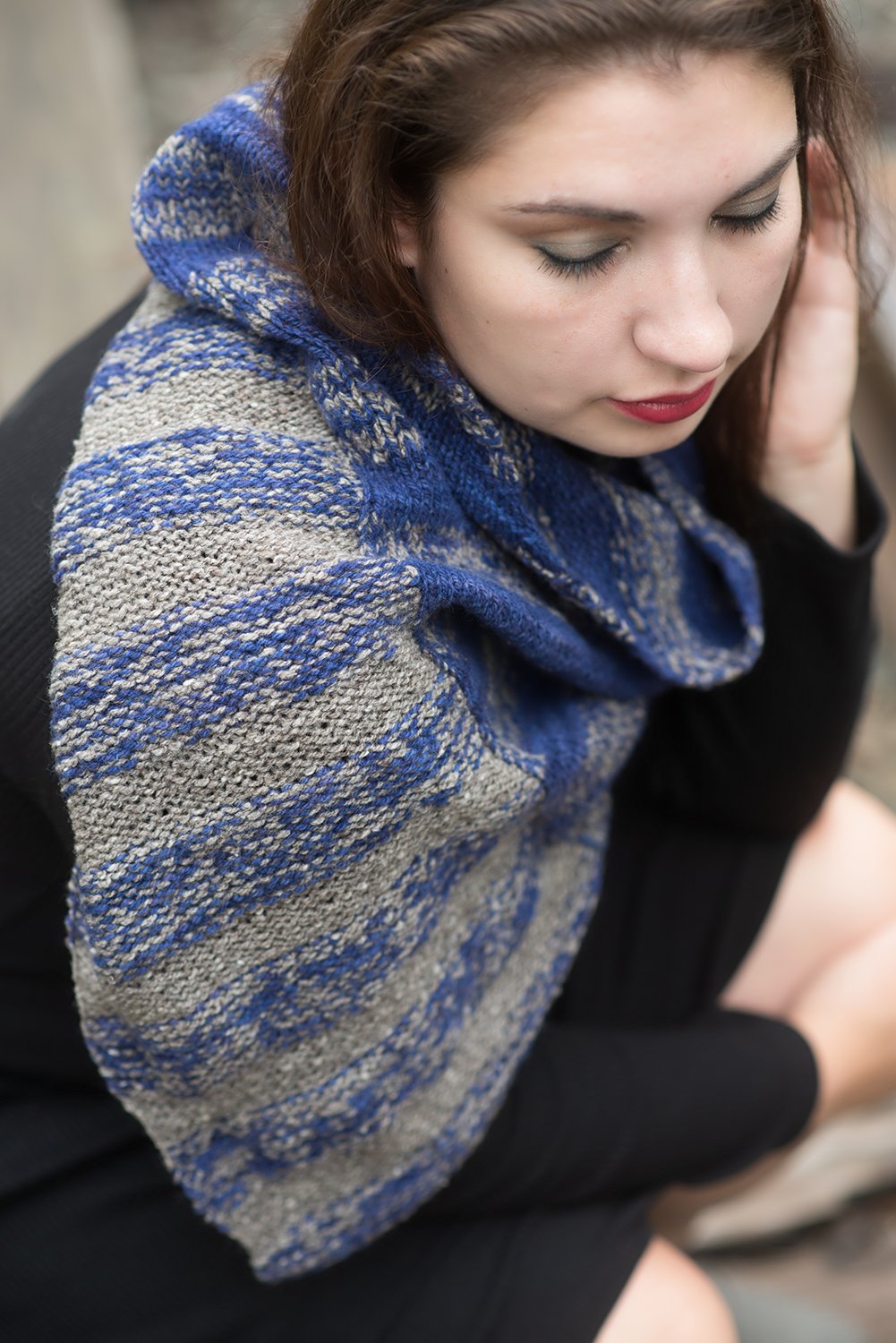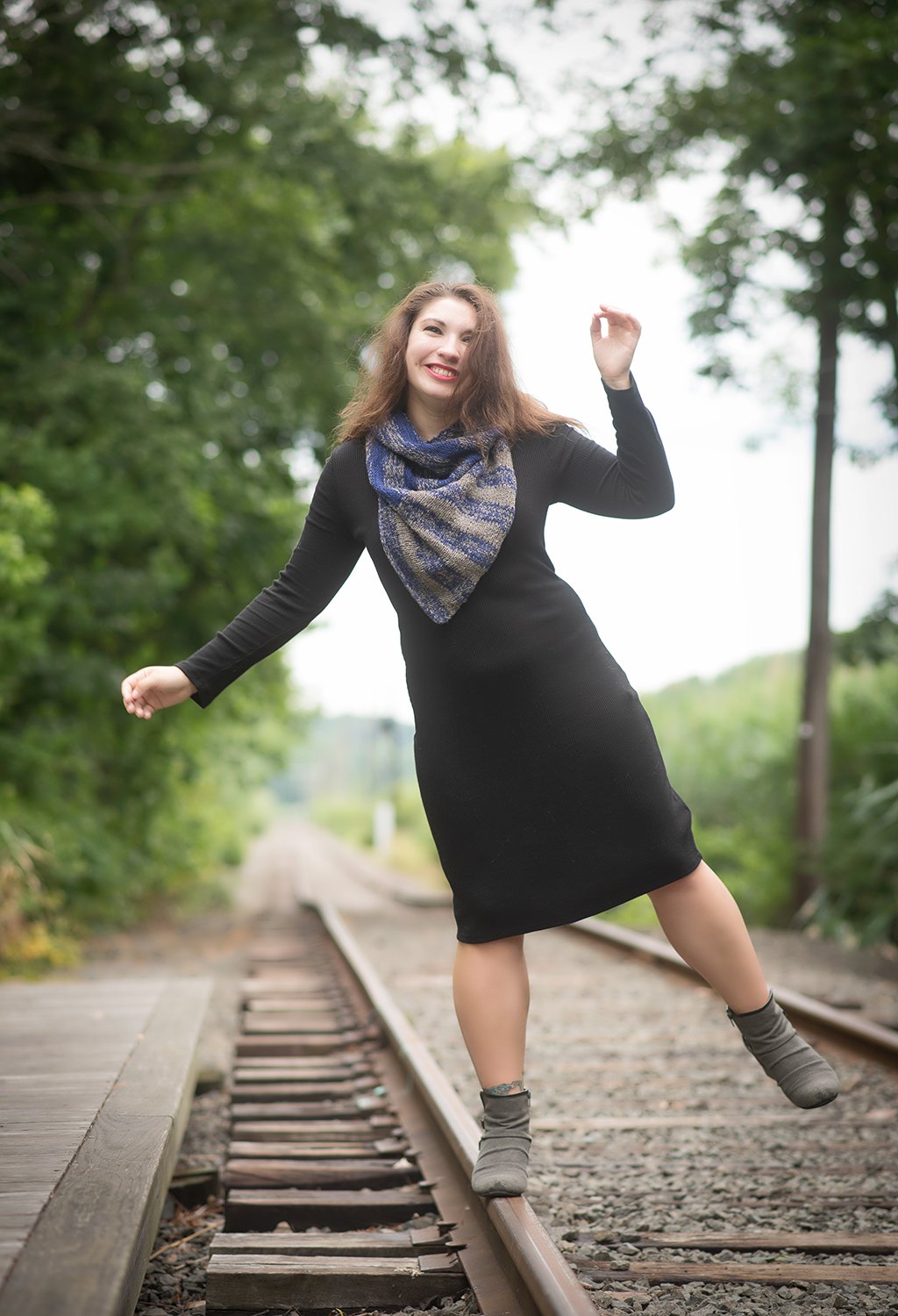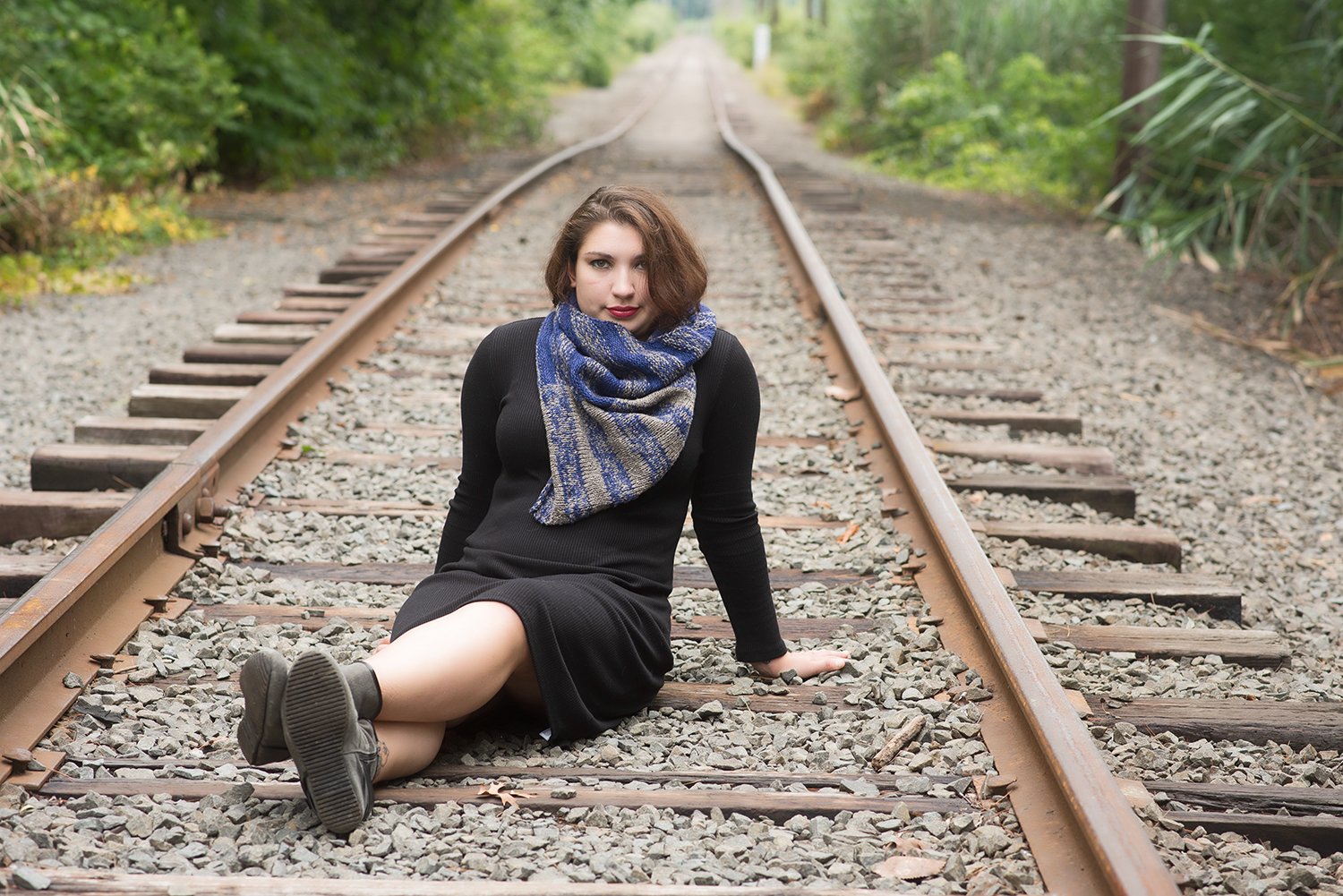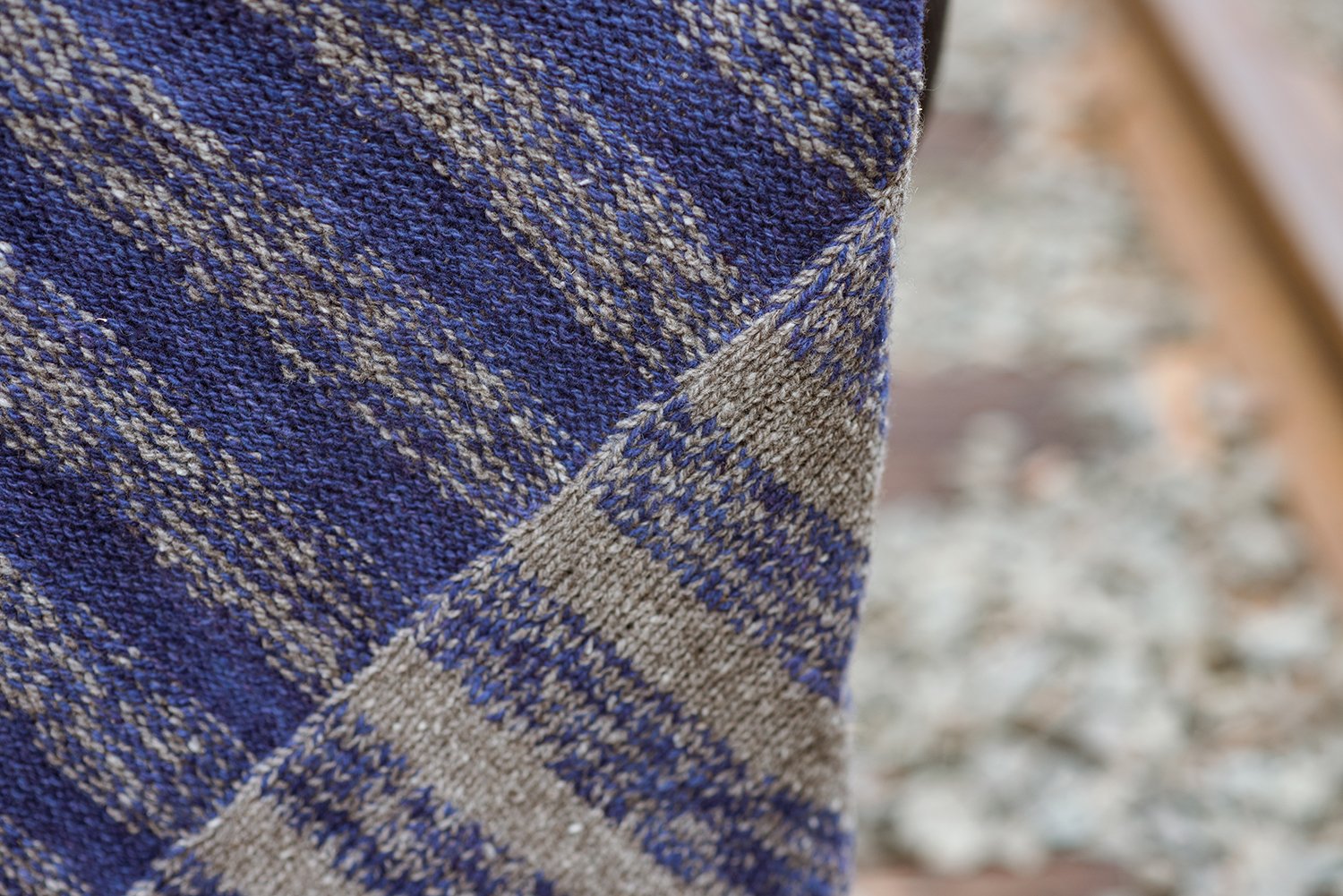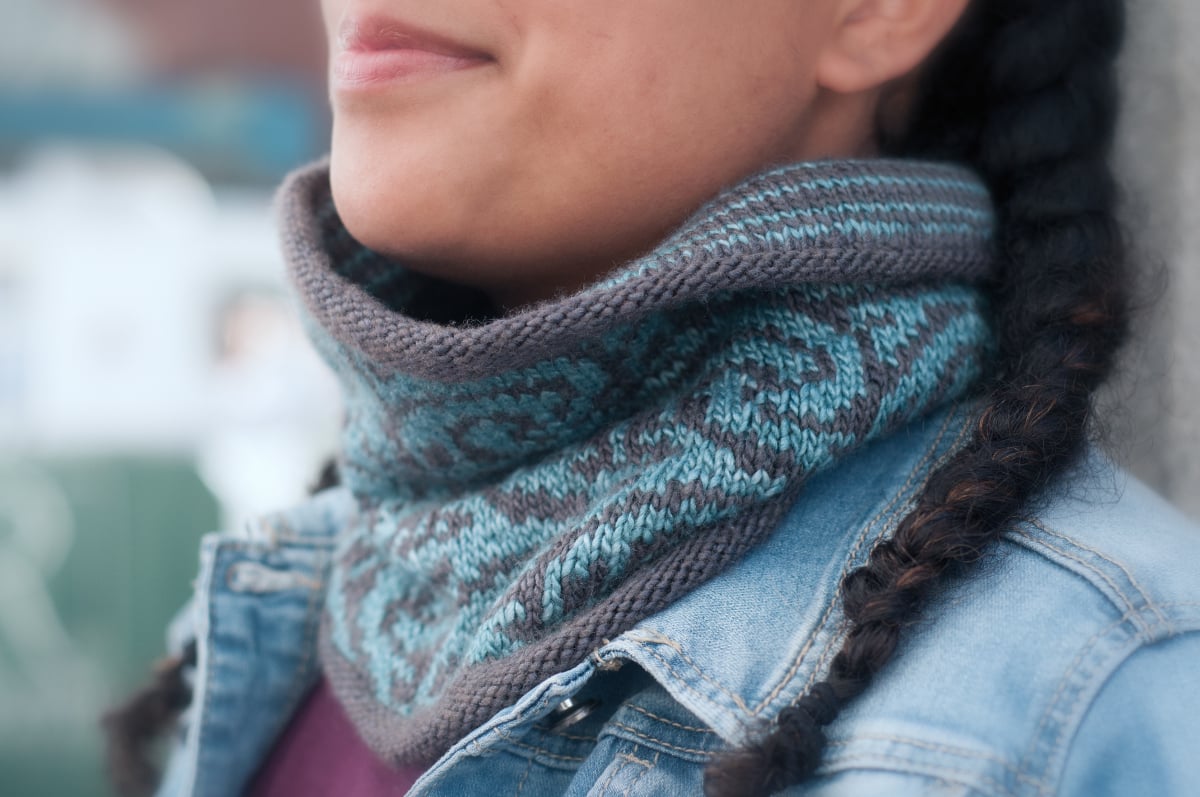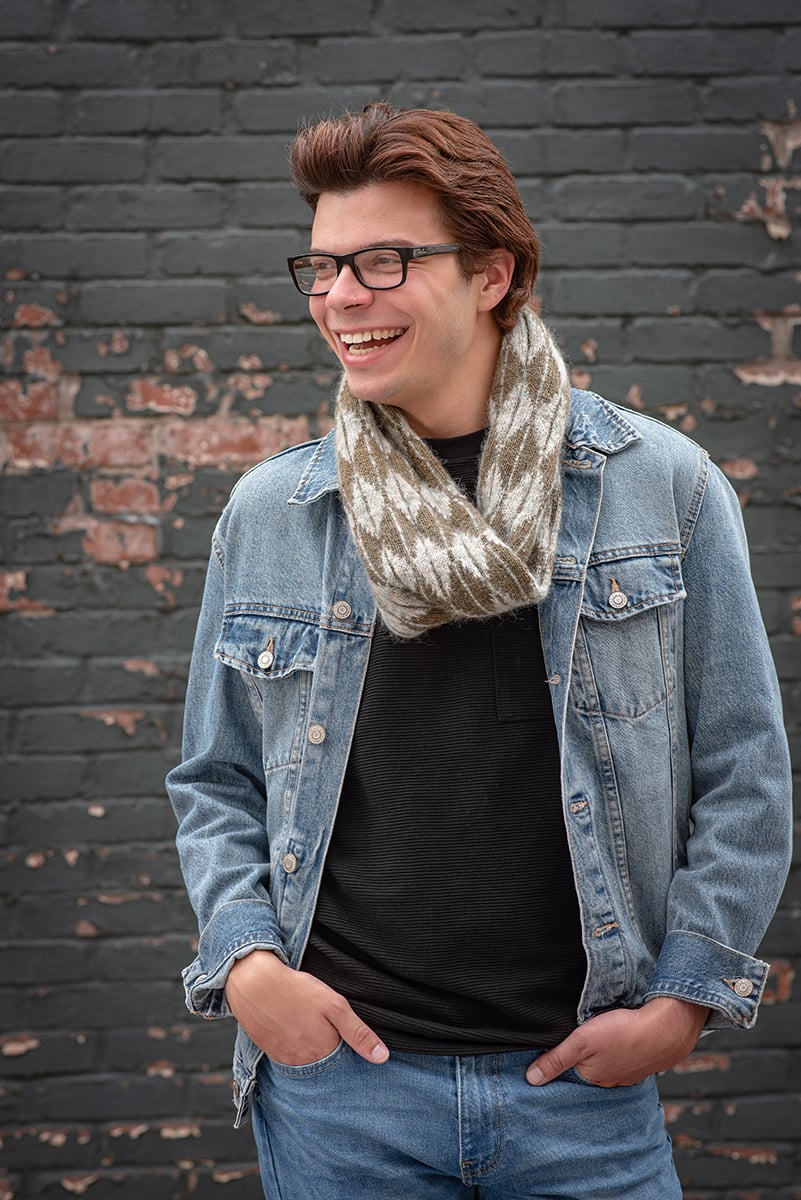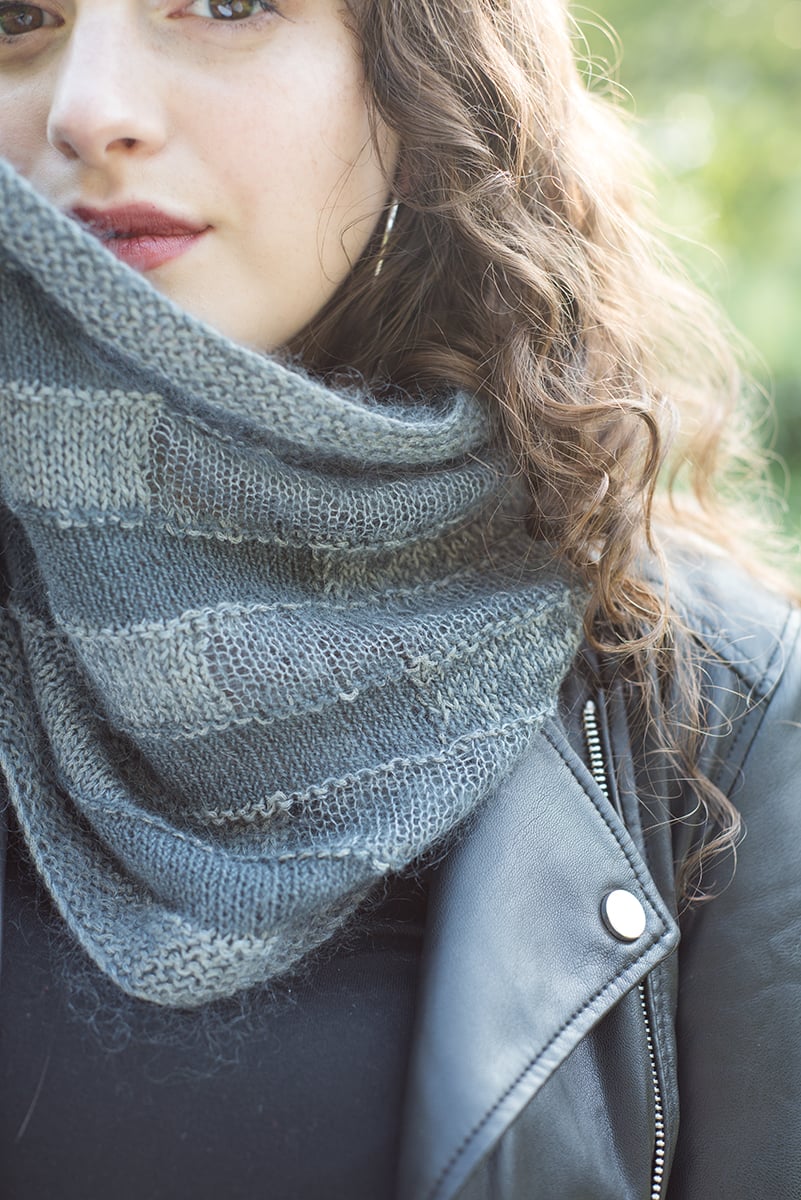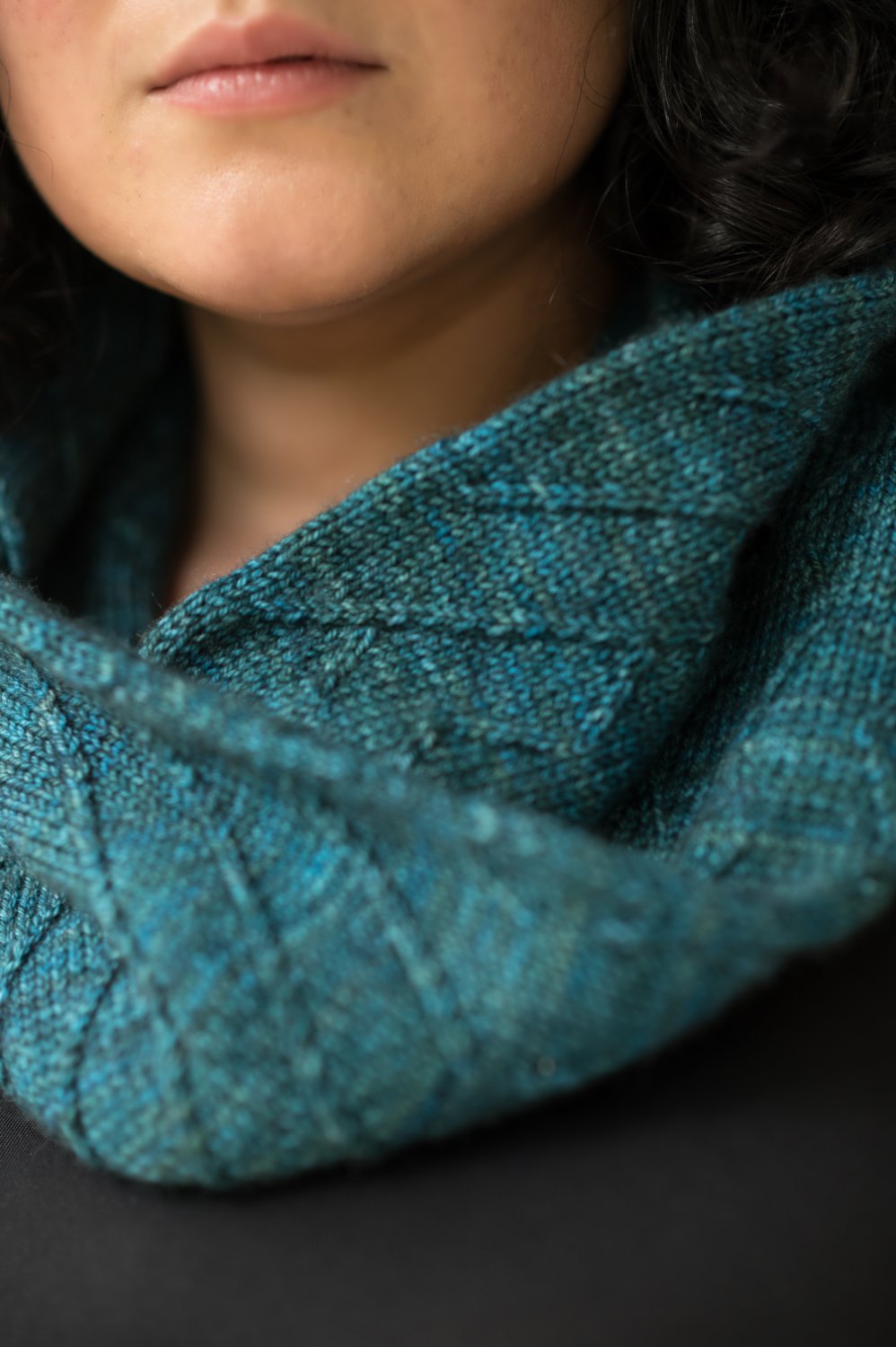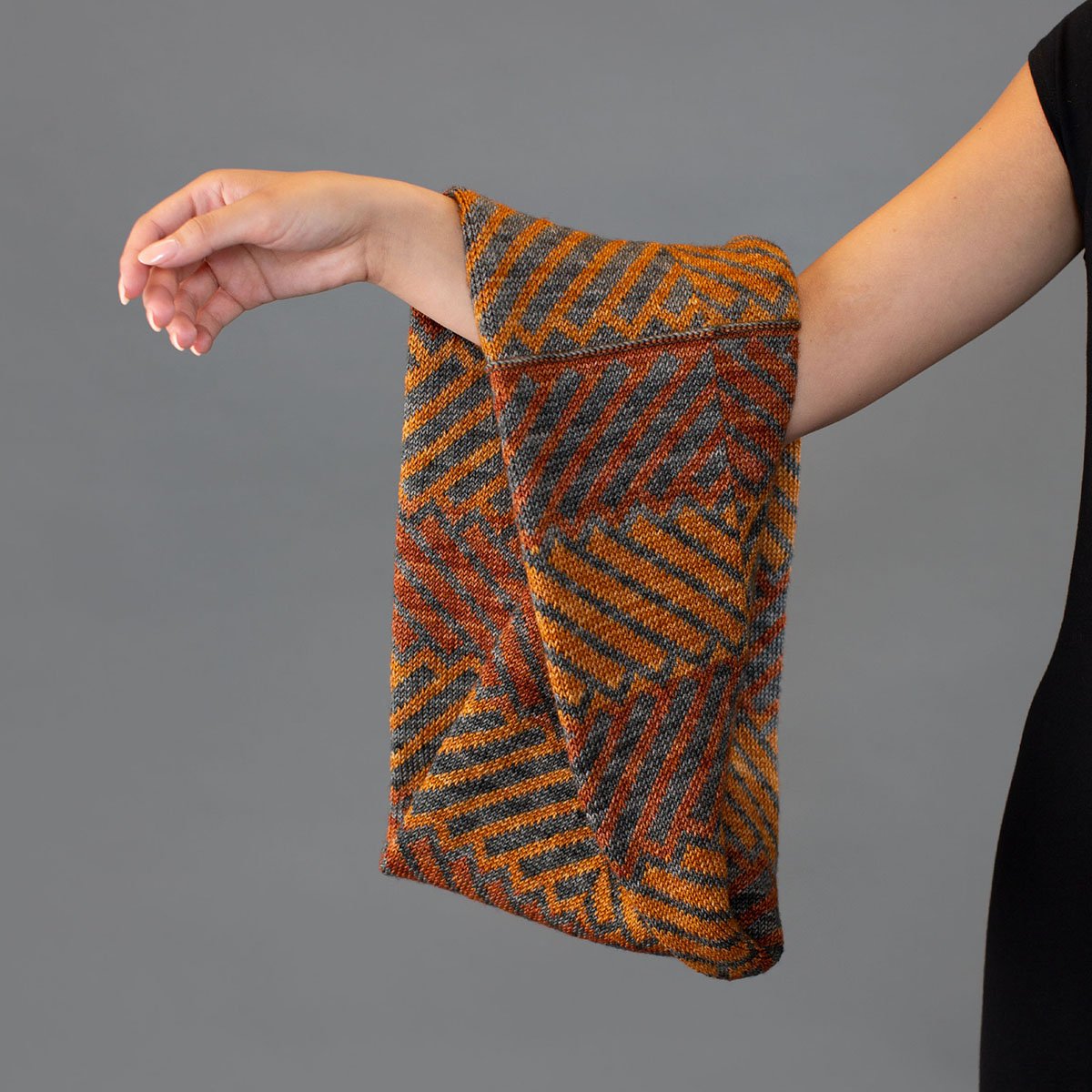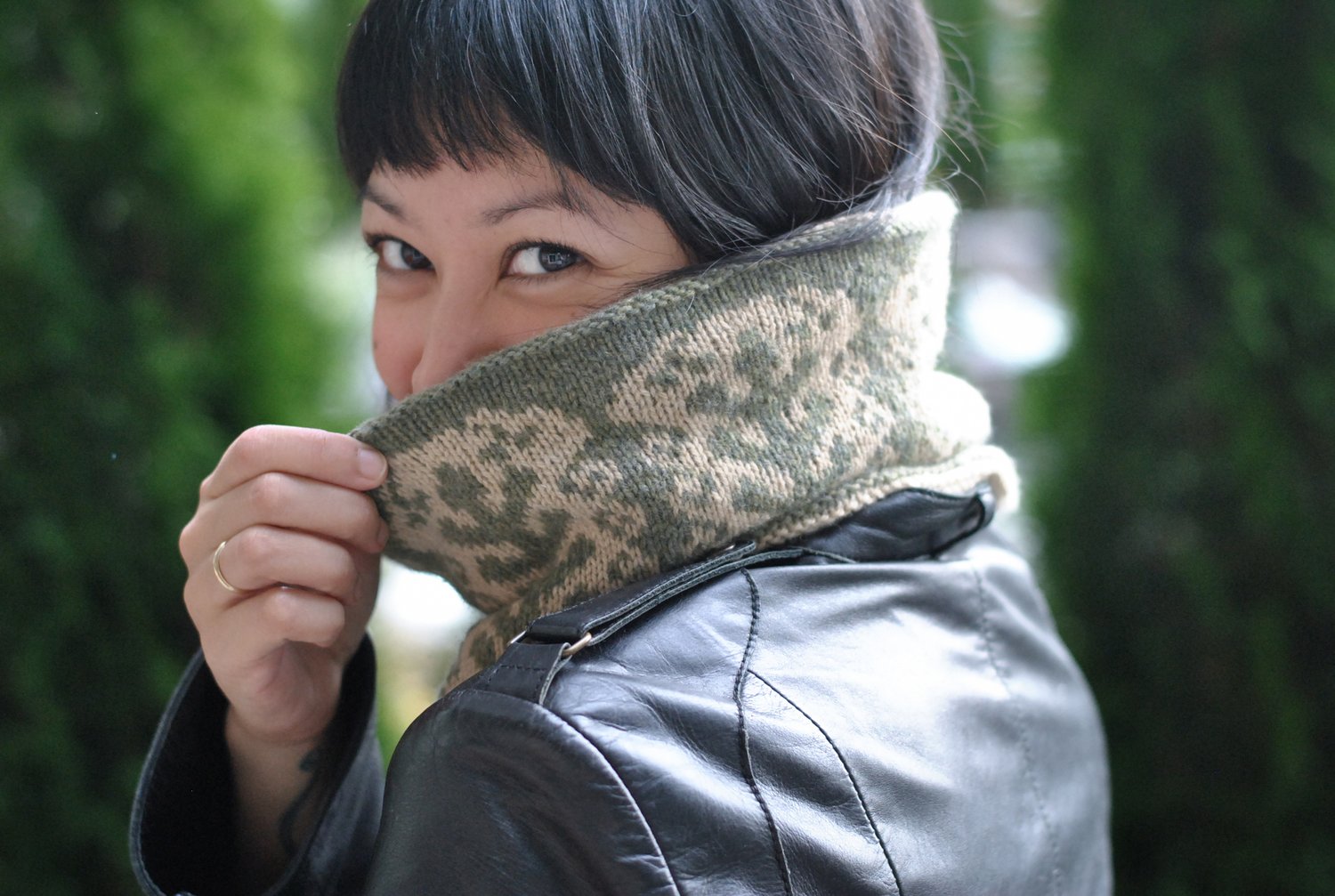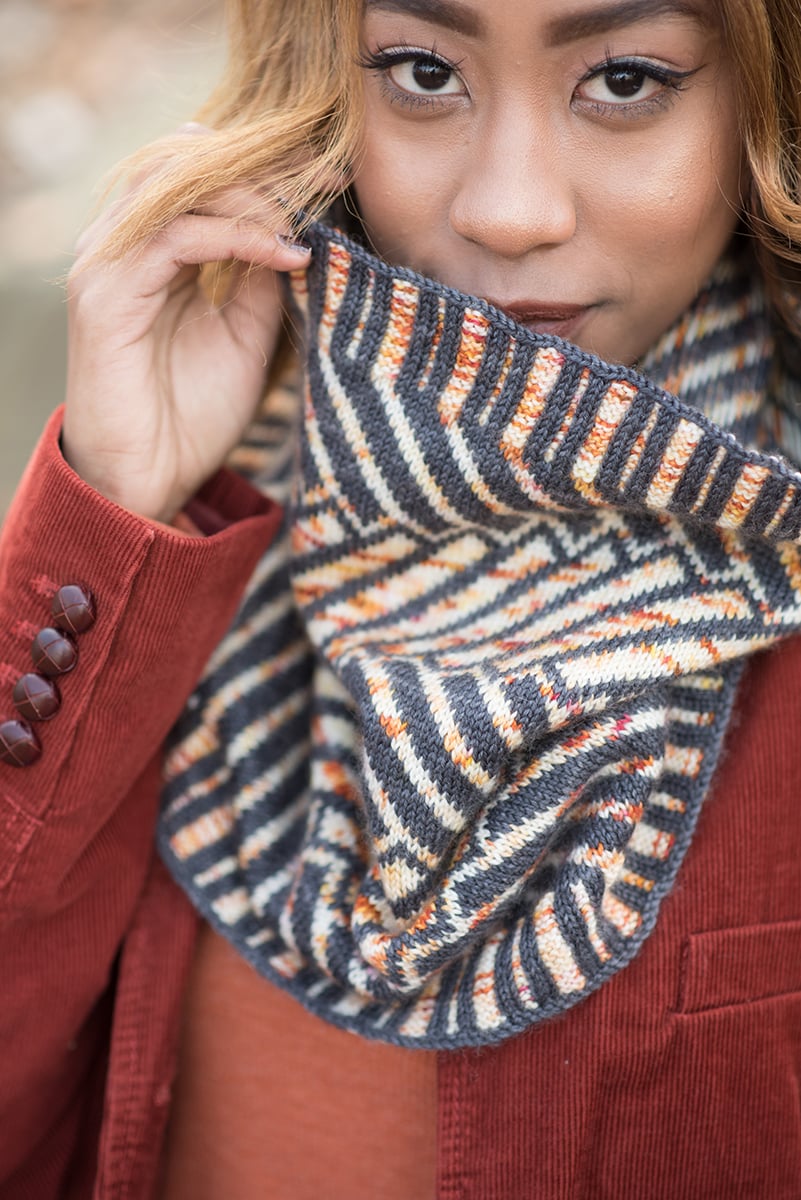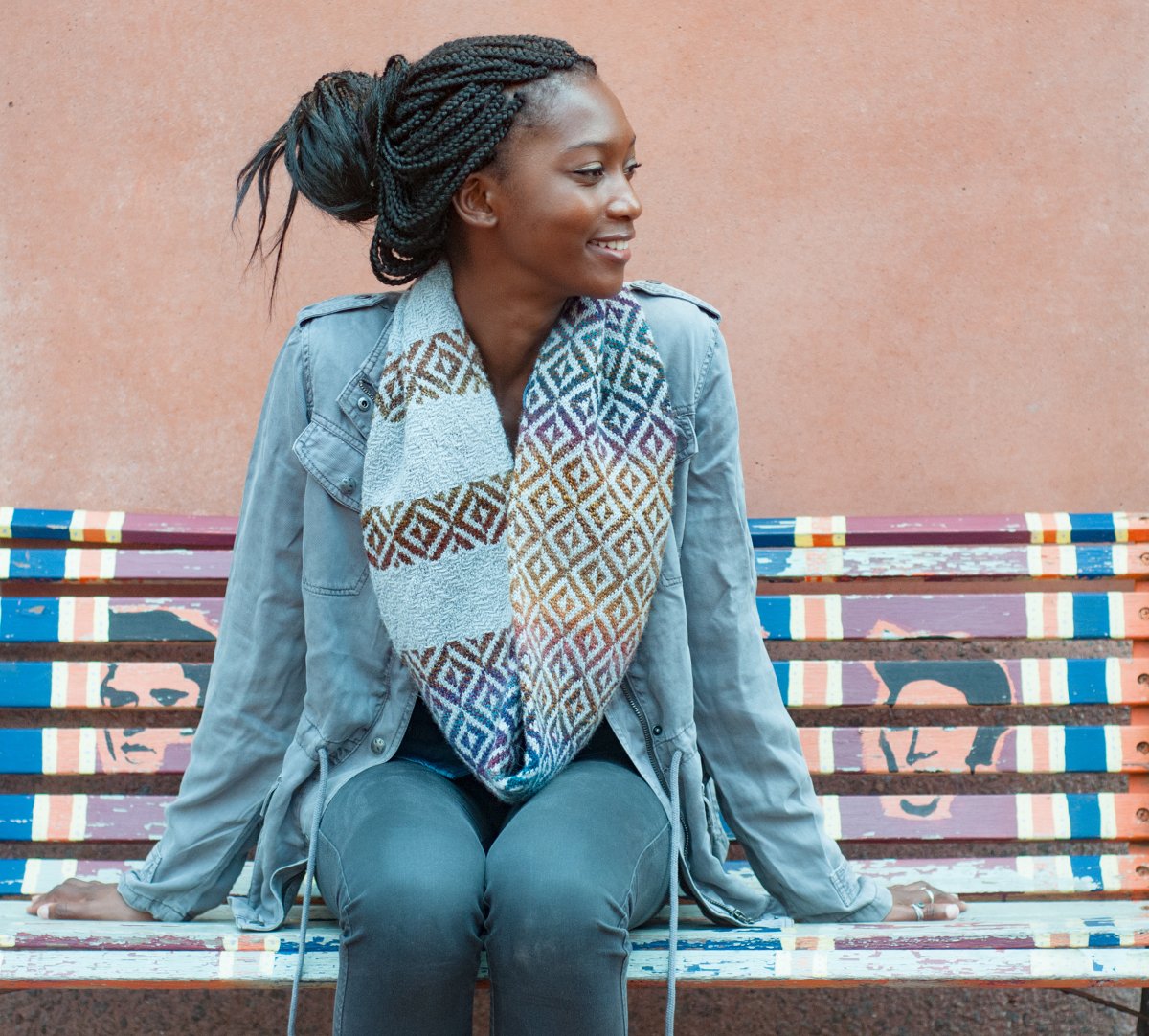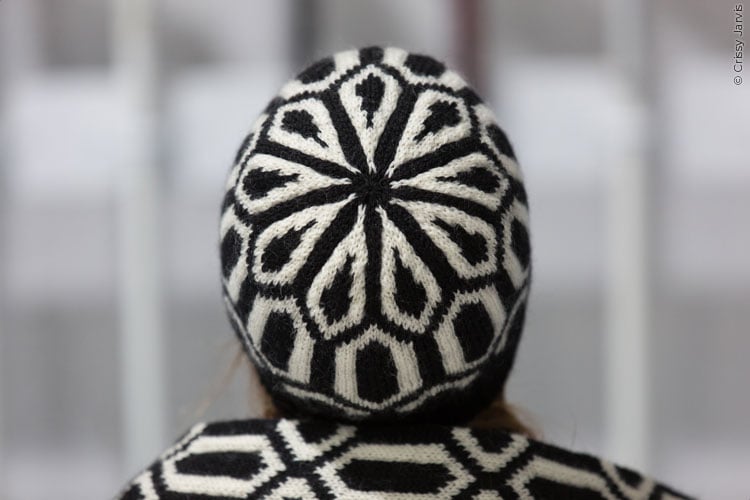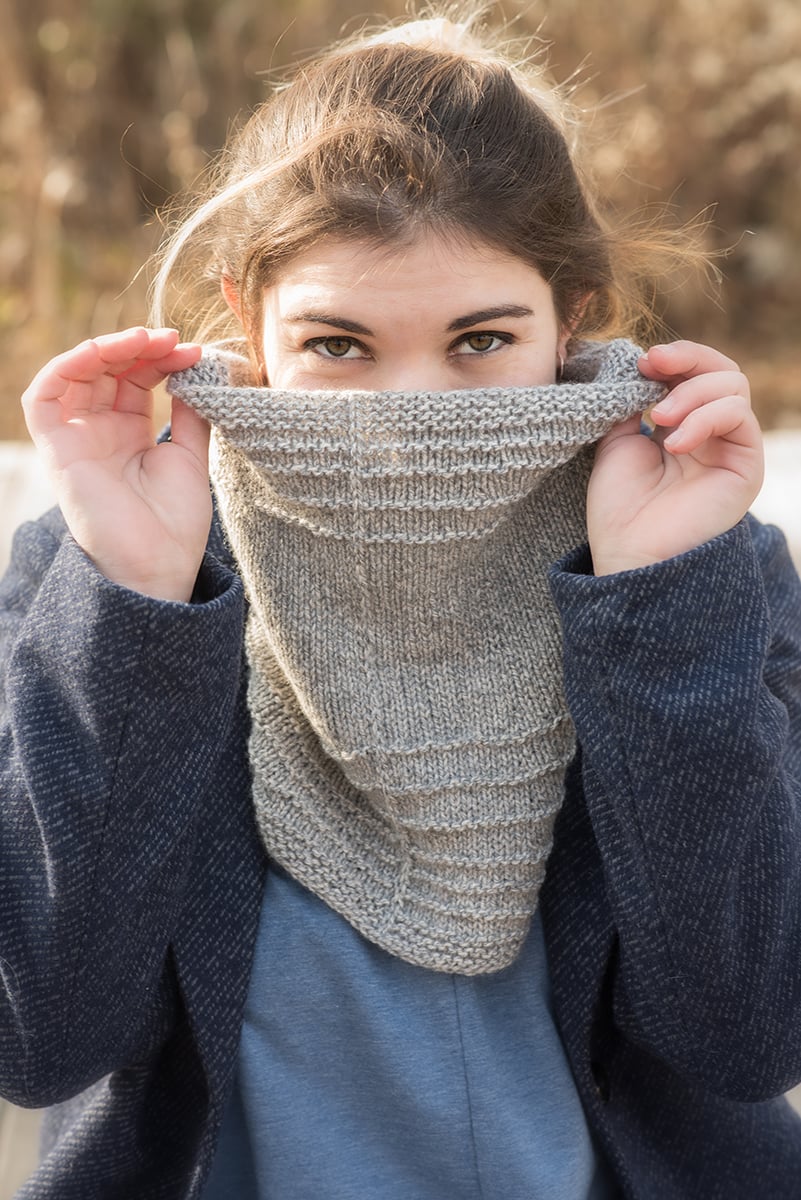Dither
On Sale
$8.00
$8.00
Soft, casual, cozy: Dither is a quick, unchallenging knit with a dramatic result. This design uses the fauxtarsia technique to create marled and solid stripes in the same row, showing off Ansel’s gauge flexibility to great effect. Fully reversible, Dither is worked flat, and then joined with a reversible seam. To make this project, you will need to know how to knit, purl, and slip stitches. Pattern includes instructions for adjusting the depth and circumference of your cowl, and for the seaming technique used.
Yarn
Jill Draper Makes Stuff Ansel (100% superfine Merino wool; 440 yds/402 m per 4 oz/113 g): 1 skein A (shown in Natural 3), 1 skein B (shown in Sapphire 1)
Needles
US 8/5 mm: 14 in/35 cm straight needles or 20 in/50 cm or longer circular (or size needed for correct gauge)
Gauge
15 sts & 23 rows = 4 in/10 cm in stockinette stitch with both yarns held together, worked flat and blocked Exact gauge is not essential, but differences in gauge will affect size and yarn requirements.
Notions
Yarn needle, 3 stitch markers
About the yarn
Jill Draper Makes Stuff Ansel is a soft, slightly nubby, 2-ply yarn made from superfine 18.5 micron Merino wool grown in the western United States and spun in New England. The yarn’s woolen-spun structure and the high crimp of the wool make Ansel a springy, cushy yarn with a lot of yardage for its weight. Though the yarn is fingering weight, Ansel can be knit at a variety of gauges, an important trait in a project like this where it’s used both single- and double-stranded on the same needle. This yarn comes in four natural shades ranging from off-white through light and medium warm grey to deep chocolate brown. Jill also dyes the lighter three shades in a range of colours, which can be used for more subtle combinations for your cowl: choose the lightest and darkest of one colour, or the same base shade in two related colours.
If substituting yarns for this project, look for yarns that give you a fabric you like at the pattern’s gauge: the sample has some body so it stands up a bit around the neck, but with enough drape to form nice folds. A lot of fingering weight yarns will give you a limp, unstructured fabric at this gauge, so consider experimenting with sport weight yarns, as well. You will need approximately 315 yds/288 m of A and 360 yds/329 m of B.
Photos © Gale Zucker.
Yarn
Jill Draper Makes Stuff Ansel (100% superfine Merino wool; 440 yds/402 m per 4 oz/113 g): 1 skein A (shown in Natural 3), 1 skein B (shown in Sapphire 1)
Needles
US 8/5 mm: 14 in/35 cm straight needles or 20 in/50 cm or longer circular (or size needed for correct gauge)
Gauge
15 sts & 23 rows = 4 in/10 cm in stockinette stitch with both yarns held together, worked flat and blocked Exact gauge is not essential, but differences in gauge will affect size and yarn requirements.
Notions
Yarn needle, 3 stitch markers
About the yarn
Jill Draper Makes Stuff Ansel is a soft, slightly nubby, 2-ply yarn made from superfine 18.5 micron Merino wool grown in the western United States and spun in New England. The yarn’s woolen-spun structure and the high crimp of the wool make Ansel a springy, cushy yarn with a lot of yardage for its weight. Though the yarn is fingering weight, Ansel can be knit at a variety of gauges, an important trait in a project like this where it’s used both single- and double-stranded on the same needle. This yarn comes in four natural shades ranging from off-white through light and medium warm grey to deep chocolate brown. Jill also dyes the lighter three shades in a range of colours, which can be used for more subtle combinations for your cowl: choose the lightest and darkest of one colour, or the same base shade in two related colours.
If substituting yarns for this project, look for yarns that give you a fabric you like at the pattern’s gauge: the sample has some body so it stands up a bit around the neck, but with enough drape to form nice folds. A lot of fingering weight yarns will give you a limp, unstructured fabric at this gauge, so consider experimenting with sport weight yarns, as well. You will need approximately 315 yds/288 m of A and 360 yds/329 m of B.
Photos © Gale Zucker.


